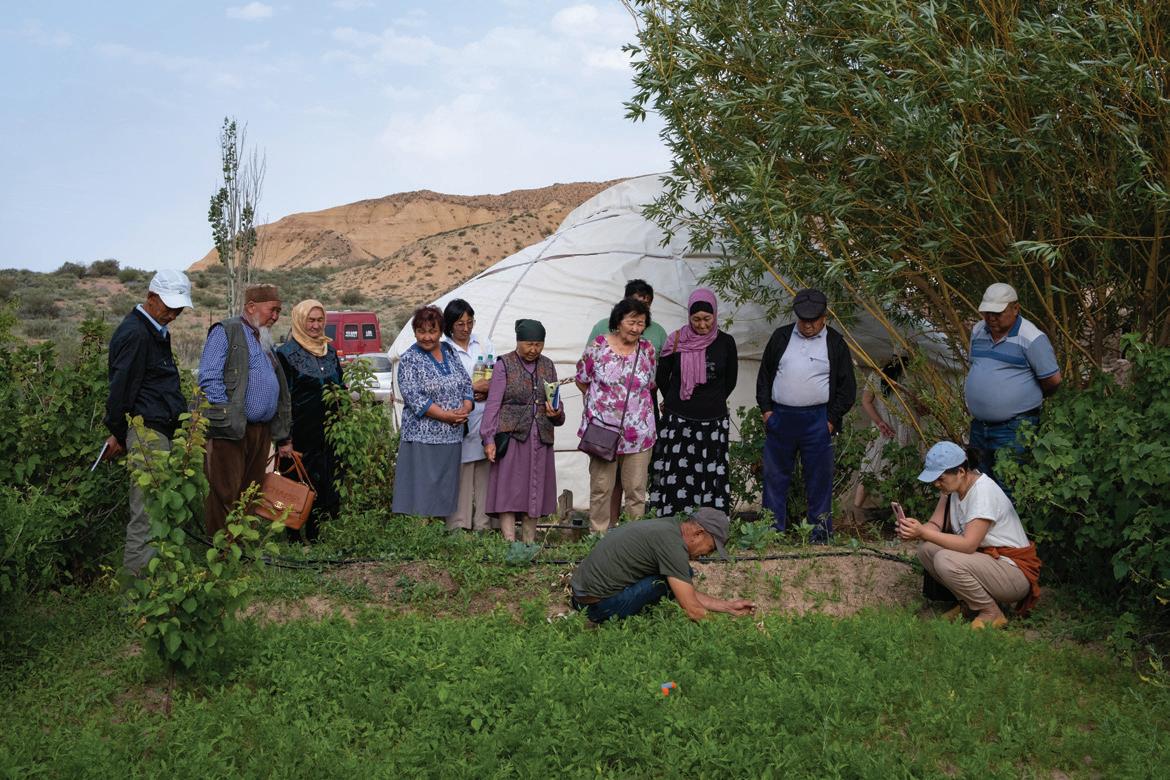
5 minute read
Part 4. Security and Resilience
The region of Central Asia, home to around 140 ethnic groups that have spread across five countries, is marked by rich history and traditions. Since the earliest of times, Central Asia has been at a crossroads between different civilizations. The Silk Road that passed through the region connected the peoples of Europe, India, and China. During pre-Islamic and early Islamic times, Central Asia was predominantly Iranian. Later, it was dominated by the Turkic people. Eventually, Central Asia became part of the Soviet Union, and all five countries became independent nations in 1991. Given their complex pasts, unresolved economic issues and a plethora of political challenges caused by the dissolution of the Soviet Union, each country has approached development in its own unique way.
Independence brought not only economic and political challenges, but also challenges regarding national security and the well-being of the many local communities and ethnic minorities that call Central Asia home.
Advertisement
A range of conflicts have taken place across the region since its independence, including armed border conflicts, inter-ethnic clashes, the rise of nationalist rhetoric, extreme climate change, the political instability that manifested in revolutions and coups, low-level human development indexes, poverty, and the unequal distribution of natural resources. These threats are complex and vary from country to country, but are often interlinked. One of the biggest security threats in the region is the increasing control over and oppression of civil society organizations. The absence of a secure environment in which Central Asian civil society can actively exercise and protect their human rights also inhibits the democratization processes of the region. Though local civil society organizations represent local communities and are in the position to address the root causes of a given conflict, persistent state-led opposition to these groups makes it difficult for them to perform their necessary roles. Increasingly, civil society organizations have been forced to close down and operate in the gray zone, which hinders their capacity to act and endangers their long-term sustainability.
The partners of CAG actively work with a wide range of target groups in the region such as youth, women, state and educational institutions, decisionmakers, and the general public. Each collaboration aims to bring a positive change to a given target group. For example, by tackling climate-related issues in the region, we contribute to a more resilient community that is not prone to conflicts that are caused by scarcity.
Similarly, by working with the rights of women and encouraging women to influence policy-making processes, we contribute to a more equal, democratic society, which is less prone to conflict.
The stencil named Brother (2018) represents a patriarchal social norm in which society expects girls to be subordinate to their brothers, regardless of their age. Families typically put the opinions of men far above the opinion of their sisters. They likewise do more to encourage and support male family members in their various aspirations, such as getting a better education and employment. The stencil was created by young girls, depicted in the photo, during a workshop organized by CAG and local partner organization Novi Ritm in collaboration with Russian artist Victoria Lomasko. For some of these girls, this was the first time they had reflected upon their positions in society, their families and their local communities, and understood that the power to change these positions lies, to some extent, in their hands. The two photos on the display Permaculture gardens in Kyrgyzstan depict the participants from Manjyly location learning to develop kitchen gardens with diverse crops, in a semi-desert location, where land is degraded, saline, and is prone to flooding. The local communities learn how to retain flood water to irrigate their land and use the land in a more efficient manner.
Adaptation to climate change is a challenge given the destructive impact industrial agriculture is having on local ecosystems, , unequal land rights, and lack of support from the government. Such initiatives increase the income of families, promote youth employment, and ensure sustainable livelihoods, food sovereignty and diversified diets.
Novi Ritm (Kyrgyzstan)
Participants of a Stencil Workshop (2021)
Novi Ritm is a place where young people can get together to converse, exchange ideas and develop their leadership, teamwork skills and learn about human rights, gender equality, environment and climate change and conflict prevention. Novi Ritm conducts different activities and events; such as workshops, meetings and training programs for teens and young adults.
Novi Ritm (Kyrgyzstan)
Brother (2018)
This stencil was created by young girls, depicted in the photo, during a workshop organized by CAG and Novi Ritm in collaboration with Russian artist Victoria Lomasko.




El Too (Kyrgyzstan)
Permaculture gardens in Kyrgyzstan (2022)
The community-based organization El Too, based in Bokonbaevo, North-East Kyrgyzstan runs projects in many thematic areas including environment protection, raising ecological awareness and developing ecotourism. In cooperation with CAG, El Too implemented a pilot project on permaculture initiatives among women.





El Too (Kyrgyzstan)
Permaculture gardens in Kyrgyzstan (2022)
Within the framework of the project initiated by CAG and El Too, rural communities in NorthEast Kyrgyzstan learnt how to develop kitchen gardens with diverse crops, in a semi-desert location, where land is degraded, saline, and is prone to flooding.











